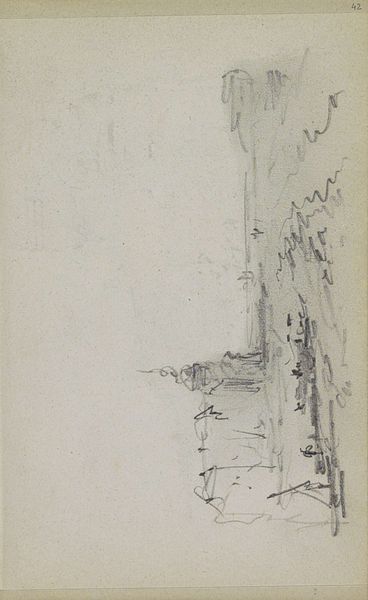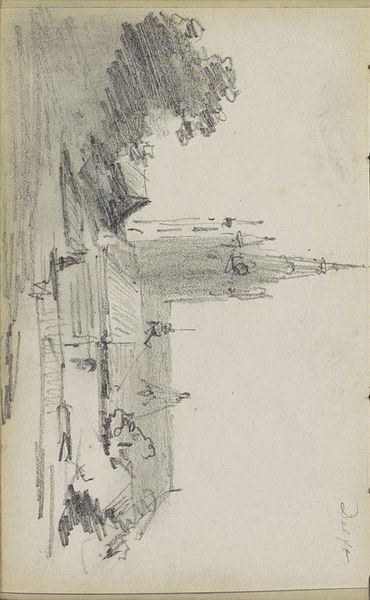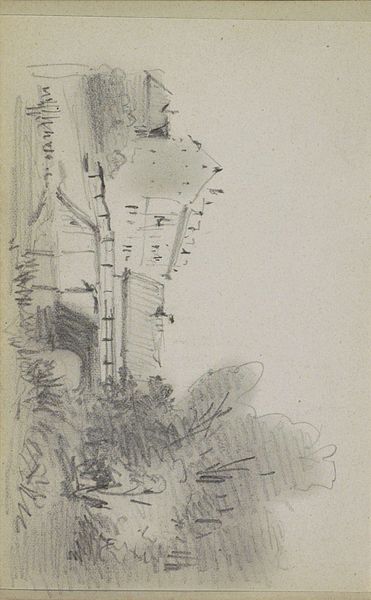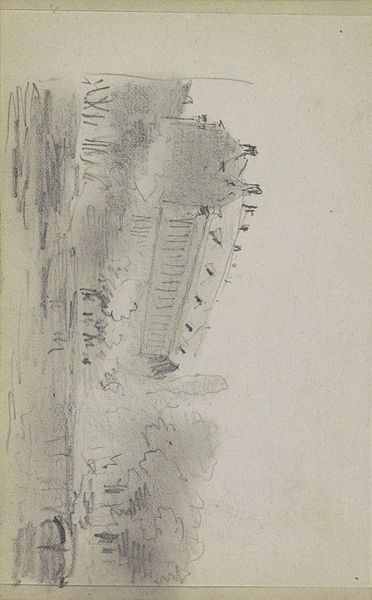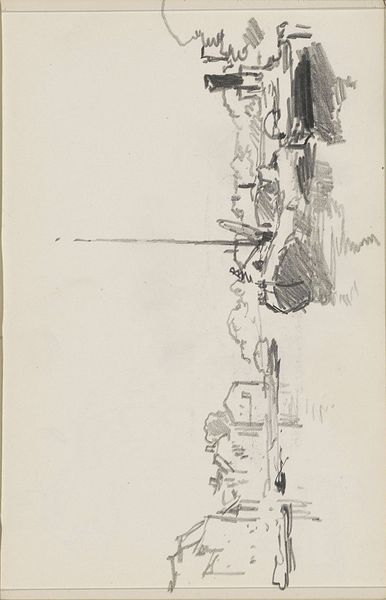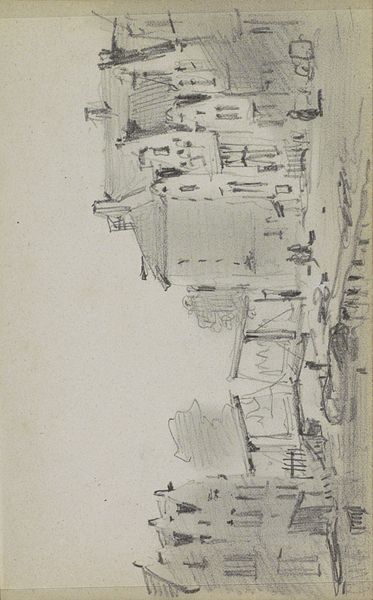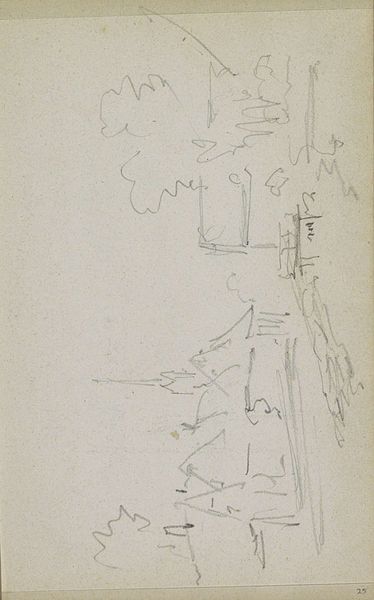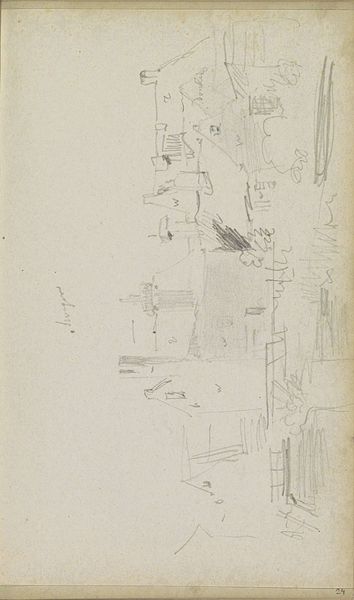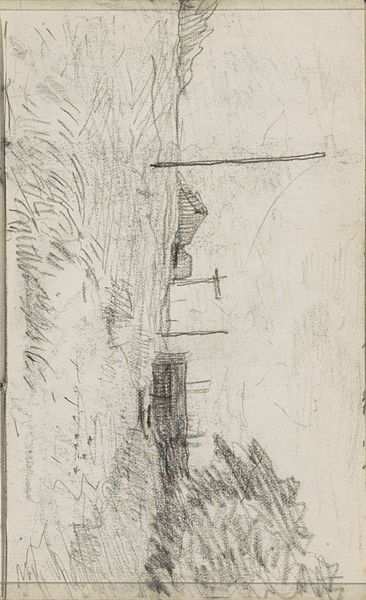
drawing, pencil
#
pencil drawn
#
drawing
#
amateur sketch
#
light pencil work
#
pencil sketch
#
sketched
#
incomplete sketchy
#
hand drawn type
#
landscape
#
personal sketchbook
#
pen-ink sketch
#
pencil
#
pencil work
#
genre-painting
#
realism
Copyright: Rijks Museum: Open Domain
Editor: So, here we have Adrianus Eversen’s “Landschap met een boerderij,” a landscape with a farm, likely from sometime between 1828 and 1897, rendered in pencil. It feels very raw, like a quickly captured impression. What catches your eye? Curator: Well, it’s fascinating to consider this piece within the context of 19th-century Dutch landscape painting. Think about the rise of Realism and the desire to depict everyday life and the Dutch countryside. How does this seemingly simple sketch engage with that broader movement? Editor: It seems like a study, almost like a practice piece, more so than a grand statement. Curator: Exactly! And that’s where its interest lies for me. Consider the role of the artist in society at that time. They were increasingly expected to be chroniclers of their time, documenting the changing landscape, and contributing to a growing sense of national identity. Does this sketch give us a clue as to how those images were workshopped and sketched before color was even involved? How might it have fit into that framework? Editor: That’s interesting. It’s almost like seeing the artist's process, their first thoughts on the subject. Is it possible to see the farm as part of some cultural narrative of Dutch identity? Curator: Absolutely. The farm is more than just a building; it’s a symbol of rural life, of the land, and of a certain idea of Dutch tradition. Think about how the image of the idealized countryside was being used to build a sense of shared heritage. Did this sketch pave the way for the romantic portrayal of that identity? Editor: That’s a perspective I hadn’t considered. I tend to focus on aesthetics first! Curator: And that’s perfectly valid, but situating it in the wider historical and cultural narrative allows us to understand it in a completely different light. We begin to see it as more than just an isolated sketch, but as part of the bigger cultural politics. Editor: Thanks, this has really opened my eyes to how much the context influences how we see even a seemingly simple sketch. Curator: Precisely! Looking at the layers, contextually speaking, shows a greater statement of culture than initially perceived.
Comments
No comments
Be the first to comment and join the conversation on the ultimate creative platform.


